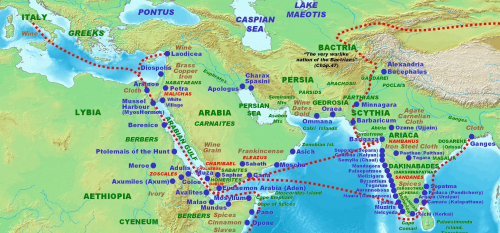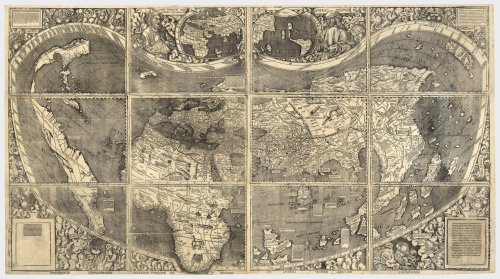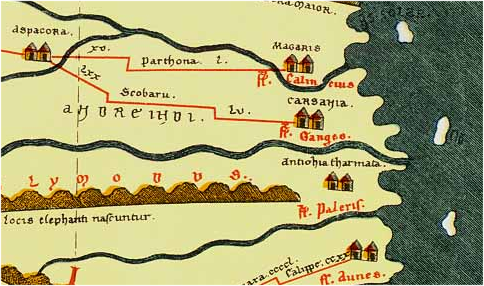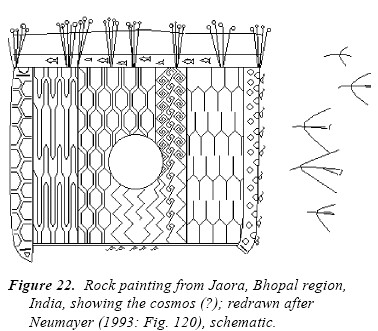
Mr. Ramaswami, a proponent of Aryan Invasion Theory and subsequent corollaries like Rāmāyaṇa and Mahābhārata happened in Russia, recently left a comment on my blog post with some questions. This was related to his article on Mint claiming that there was an Aryan Invasion and my subsequent response citing two papers which show that there was none.
He wrote
In attempting to refute my theory, Nair has waxed eloquent about DNA, linguistic history etc but does not have the courage, for obvious reasons, to state with conviction the central question raised in my article – what is the
date?
The only reason I don’t mention the date is because: I don’t know. This is mostly because I have not seen a consensus date among historians and archaeologists so far, not because I have any agenda.
Instead, everyone has their favourite date based on their favourite techniques and Dr.Subhash Kak has a good summary. The dates vary from 5th millennia (based on astronomical references) to 1000 B.C.E. One argument was that we don’t find any dates between 2500 – 1500 B.C.E, but Dr. Kak’s paper mentions 1924 B.C.E as a possible date.
The date of 1924 BC. Based on Puranic genealogies that see a gap of 1000 years or so between the War and the rule of the Nandas (424 BC) we get the date of 1424 BC. But Pargiter, while editing these accounts from the various Puranas,4 suggested that the original number was 1,500 which was wrongly copied in various texts as 1000, 1015, or 1050. I accept the arguments of Pargiter and, therefore, consider the Puranic tradition to support the date of 1924 BC. [The Mahabharata and the Sindhu-Sarasvati Tradition]
Mr. Ramaswami is quite right when he says that it is strange that there is a spread of millennia for an epic which tells the story of a few generations and we cannot accurately nail it to a specific date. It would be helpful if we could find some horse bones or evidence of Ashwamedha or of the palace at Indraprastha. It would indeed give closure if we could say for sure if Mahabharata was real history, or a minor history event embellished by Vyasa or just poetic imagination. Does this look absurd compared to the certainity of events in Egypt and Mesopotamia? It certainy does.
Ramaswami says
f you were the Indian government would you not dig up these places like the Mumbai Municipal Corporation right down to the centre of the earth if necessary? What we done and what have we found? Let me tell you the answers. If at all they have dug they have found nothing or found something to the contrary. After all if there was any evidence it would have made headlines all over the world. The correct answer is that no excavation has been done because everyone knows that nothing will be found because it did not happen.
How do we know this is the correct answer? No idea. But here is another answer.
“Those who are on the side of the Hindu fundamentalists have been misusing archaeology to push back the antiquity of Indian civilization”, was one of the complaints when Jagmohan of that “communal” NDA Govt started the Saraswati Heritage Project to conduct archaeology along the banks of the Ghaggar river. The project which involved IITs and Birbal Sahni Institution was canned by the present UPA Govt, not because of the fear that nothing will be found, but because of the fear that something will be found.
There is one more reason – people might decolonize their minds. This is what happened to the Director General of the Archaeological Survey of India, B.B. Lal. A disciple of Sir Mortimer Wheeler, he started out by believing in the Aryan Theory and then went on to dig some Mahabharata sites.
In my report on the excavations at Hastinapura and in a few subsequent papers I expressed the view that the Painted Grey Ware Culture represented the early Aryans in India. But the honeymoon was soon to be over. Excavations in the middle Ganga valley threw up in the pre-NBP strata a ceramic industry with the same shapes (viz. bowls and dishes) and painted designs as in the case of the PGW, the only difference being that in the former case the ware had a black or black-and-red surface-colour, which, however, was just the result of a particular method of firing. And even the associated cultural equipment was alike in the two cases. All this similarity opened my eyes and I could no longer sustain the theory of the PGW having been a representative of the early Aryans in India.[Let not the 19th century paradigms continue to haunt us! ]
If you go to any library or watch History channel, you will be bombarded with information on Egyptian or Mesopotamian civilization. Thus there is no surprise if there is certainty in their events, because much archaeology and research has been done, while nothing of that sort has been done in India, due lack of political will. Why go as far as Mahābhārata war? The dates for Adi Shankara has a spread of millennia.
A good example of a myth turning into reality was the Trojan war. Interested in the location of Homer’s Troy, Heinrich Schliemann started digging for it in Turkey. Though British archaeologist Frank Calvert had identified Hissarlik as the site of Troy, his work was over shadowed by Schliemann who published Ithaka, der Peloponnesus und Troja in which he claimed Hissarlik as the site of Troy. This is now accepted by historians.
Even though the site was discovered there were sceptics who claimed that Troy was an insignificant town and such a large war as described by Homer could not have happened there. For the past 16 years more than 350 people have been collaborating on the excavations in the site and their discoveries have resulted in some new facts. Troy, it seems was a large and important city controlling access from the Mediterranean to the Black Sea. German archaeologist Manfred Korfmann who has been excavating in Troy wrote
According to the archaeological and historical findings of the past decade especially, it is now more likely than not that there were several armed conflicts in and around Troy at the end of the Late Bronze Age. At present we do not know whether all or some of these conflicts were distilled in later memory into the “Trojan War” or whether among them there was an especially memorable, single “Trojan War.” However, everything currently suggests that Homer should be taken seriously, that his story of a military conflict between Greeks and the inhabitants of Troy is based on a memory of historical events–whatever these may have been [Was There a Trojan War?]
Let there be more archaeology and Mumbai Municipal Corporation like digging around the country. Let there be an Archaeological Survey of India freed from political masters. Let us allow researchers into the field. Let us first have some data before jumping to conclusions.
Ramaswami says, “the gap in the MB dates coincided with the Aryan invasion and they are both the same events.” I don’t believe in an Aryan Invasion, due to lack of genetic evidence, and so the date of Mahābhārata is not tied to it and that’s our disagreement in this debate.






